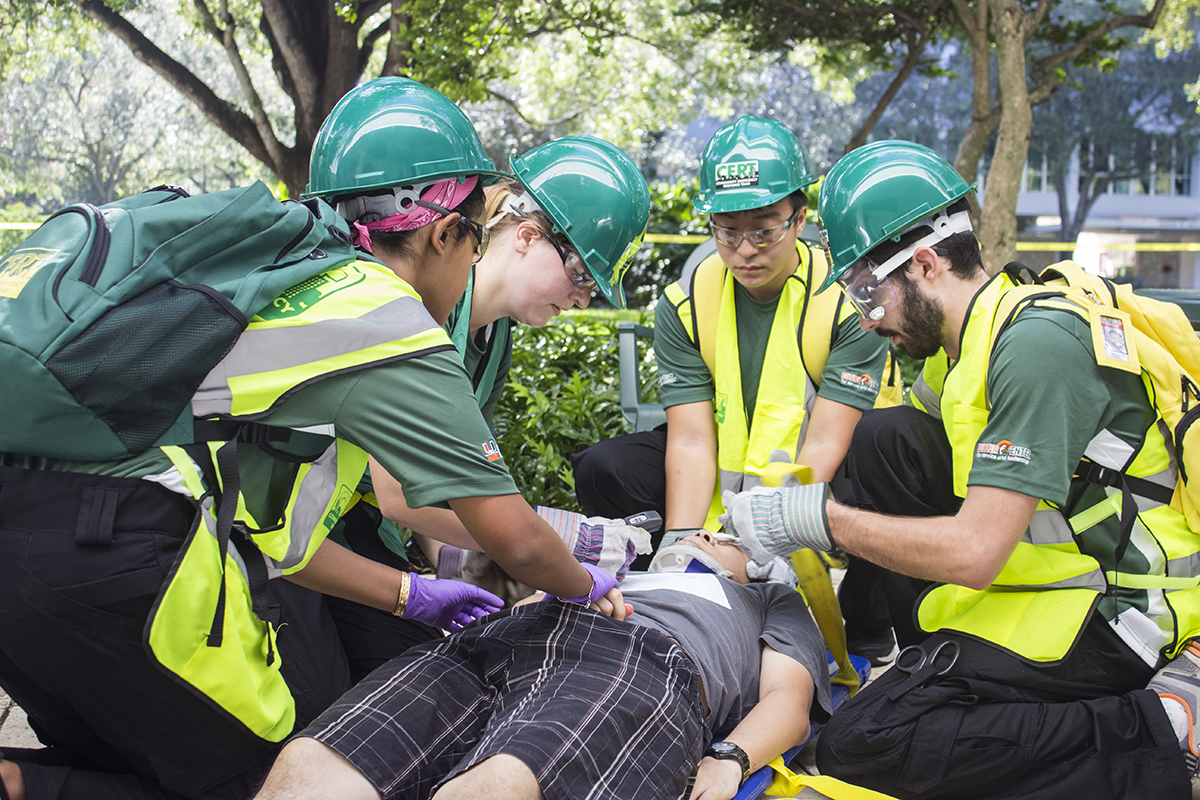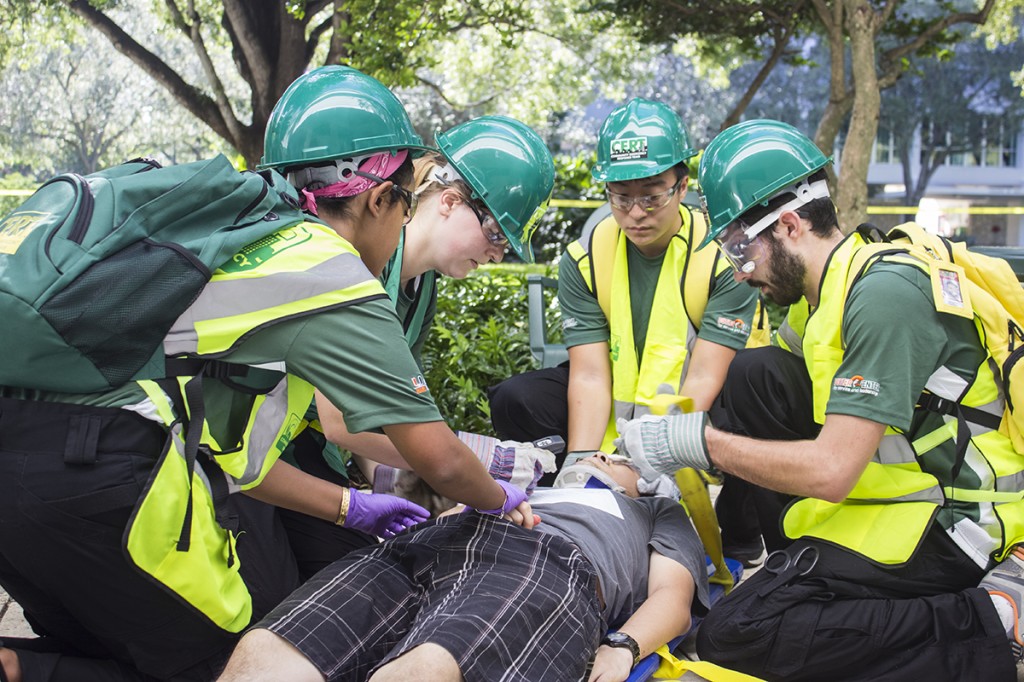

Michael Merein was lying down in a smoke-filled room in Dooly Memorial when a group of Canes Emergency Response Team (CERT) members walked in to the rescue. He had suffered serious burns and was unconscious, having to be back-boarded to a safe medical operations area. This was only one of the many scenarios CERT members had to deal with during this semester’s Disaster Readiness Exercise (DRE), held Sunday afternoon.
CERT is an organization modeled after Community Emergency Response Teams, a program developed by the Federal Emergency Management Agency that is used all over the country. It trains local community members to actively respond in disaster situations until they can get proper emergency responders on the scene.
“At UM, CERT was founded to have students be able to take care of the university community and potentially the greater community in case of a disaster situation or an emergency situation,” said Chelsea Cosner, vice president of logistics for the club. “Say there’s a hurricane and people need help after it; those are situations that can easily happen in Miami with large weather disasters. This year, something we’re working on, for instance, is being trained to establish a shelter and food and water.”
In order to become CERT members, students must go through training sessions at the beginning of each semester, as well as attend bi-weekly workshop meetings and successfully go through the club’s DRE, a drill exercise where a mock disaster is put together in a certain area of campus, and volunteers play the part of victims.
“We train members in basic first-aid, search and rescue, disaster psychology and basic fire suppression,” said Kyle Rosen, president of the club. “We hold a DRE at least once a semester. It’s meant to be a full-scale simulation, so we cover everything, and we set up an instant command, we set up medical operations, we have teams that are going out into the field, sizing up the scene, doing search and rescue, triage, transporting the patients, dealing with fires, so it’s like putting everything together in one big drill.”
Before the DRE, volunteers like Merein received particular victim scenarios and then received the appropriate makeup before heading to their particular disaster location. Once everyone was in place, CERT members began the exercise and had to scout the scene, deal with obstacles like fire smoke, and safely transport patients to the medical operations section, where the victims’ vital signals would be assessed and the appropriate care would be provided.
“Drills like these are mainly important because we need to get that feedback and see what we need to improve on,” said Christopher Paredes, assistant vice-president for training, after the exercise’s outcome was evaluated by Fire Department members. “Part of being good in life is just practicing, and practicing and practicing, so we do this every semester and we are really devoted to this. We train every other Tuesday so we are enforcing doing a really good job, as we have people counting on us.”
The team’s overall feedback was positive, and all victims were safely transported to the medical operations section.
“Everybody can do something,” Rosen said. “Not all of us have advanced training. This is a really basic-skill thing, but it can help a lot, especially when you are dealing with large-scale events, and we are on a large campus, so having a number of people that can act as a force-multiplier means that our basic skills can help extend the capabilities of the emergency responders.”





